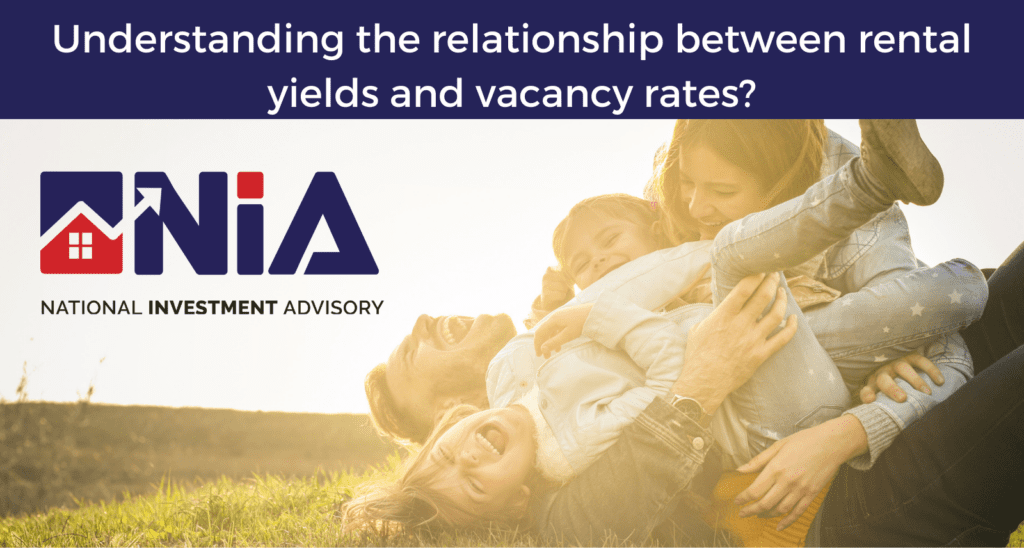As all NIA clients have experienced in our research, we place a high importance on the cash flow of each property. As part of our due diligence, we dissect the expected rental performance analysing expected rental demand and rental return for each property.
Just recently I was asked “how do vacancy rates effect rental yields? “.
Firstly, let me give a brief explanation on vacancy rates. A vacancy rate gives an indication of the percentage of rental properties that are vacant within an area. For example, if the vacancy rate is 10%, this mean 10 in every 100 properties in that area is available for rent. In general terms, the higher the percentage of vacant properties, the weaker the level of demand present in the local market.
Now if you’ve ever had an NIA strategy session, you’ll know that property economics #101 starts with supply and demand. Therefore, it’s important to note that vacancy rates and rental yields have a close relationship.
Generally, a market is considered balanced at 3% vacancy rate and anything less is an undersupply. Conversely, anything over 3% is considered an oversupply and may have a negative impact on rental returns and prices.
As I’m sure you’ve worked out by now the more competitive the rental market, the higher the likely rental yield.
To put into context in today’s market, regional Australian tenants are experiencing their biggest annual rent increases since January 2009. Regional tenants were hit with their biggest yearly rent hike ever, with the median figure up 11.3 per cent. It was driven largely by ‘sea changers’ wanting a better lifestyle and no longer needing to commute to the CBD every day as they did in pre-COVID times. That influx of demand of sea ‘”sea changers”‘ has led to a sharp rise in rental prices.
Now that you know the close relationship vacancy rates and rental yields share, you’ll understand why we place such high importance on this in our due diligence report. Both factors will affect your investment returns. It’s important that we consider vacancy rates before investing as ultimately, selecting markets under pressure from tenant and owner occupiers alike, will allow you to hold quality assets for the long term.


